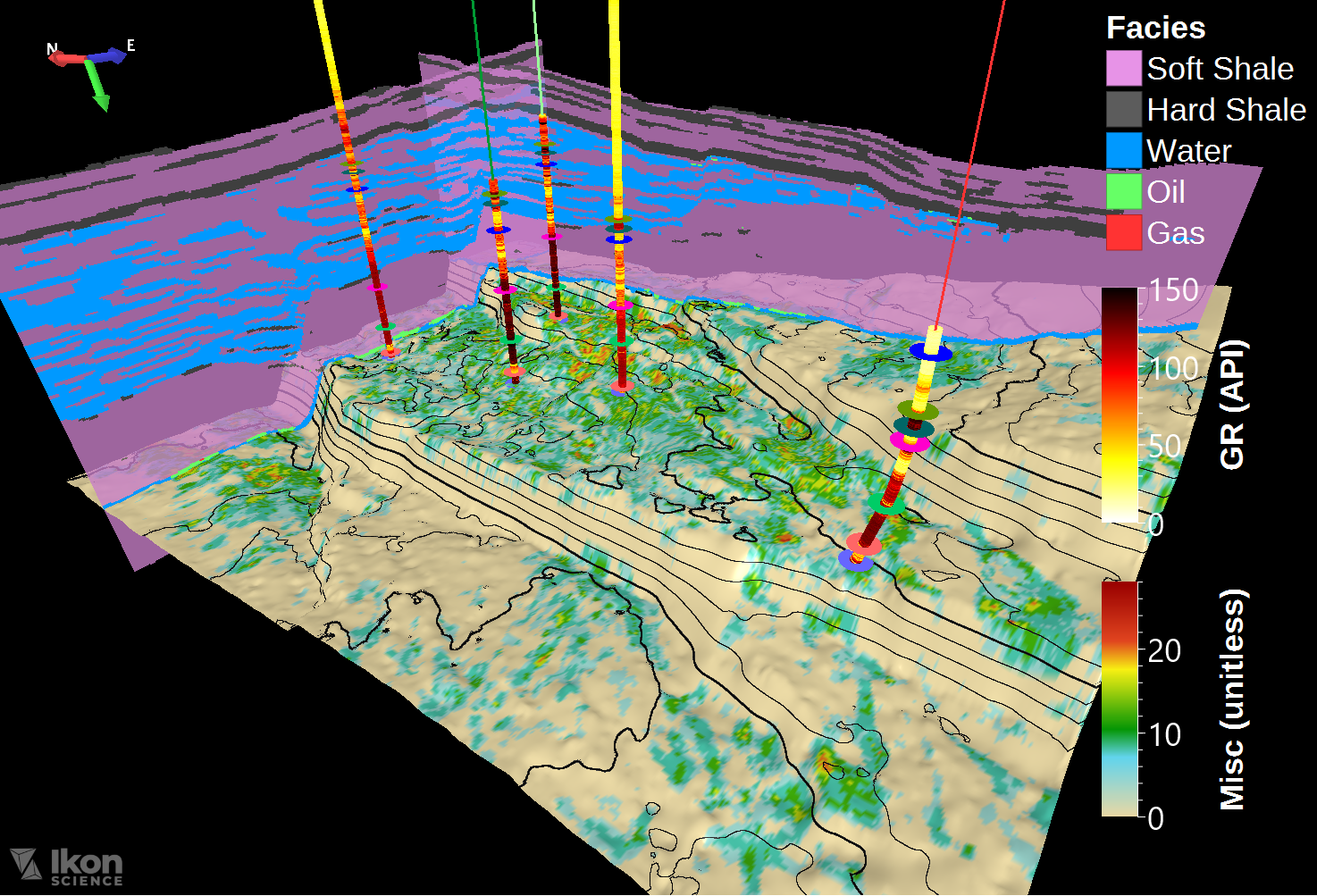
Seismic inversion methods, a sophisticated technique used in geophysics, transforms seismic reflection data into quantitative rock-property information of the subsurface. This technology has significantly evolved over the years, driven by advancements in computational power, algorithms, and geophysical theory. Here’s a detailed look at seismic inversion workflow, its development, and its impact on the field of geoscience.
What is Seismic Inversion?
- The Basics: Seismic inversion involves the conversion of seismic reflection data into a model of the subsurface. This model includes parameters like acoustic impedance, porosity, and fluid content, which are crucial for identifying and characterizing geological formations.
- Types of Seismic Inversion:
- Post-Stack Inversion: Applied to seismic data after stacking, primarily producing acoustic impedance models.
- Pre-Stack Inversion: Works on pre-stack data, allowing for more detailed analysis of rock properties such as shear impedance and density.
- Simultaneous Inversion: Integrates multiple seismic attributes simultaneously for a comprehensive subsurface model.
Early Developments
- Analog Beginnings: Seismic inversion’s roots trace back to the early 20th century, where initial efforts were analog, relying on simple graphical techniques and manual interpretation of seismic records.
- Digital Revolution: The 1960s and 1970s marked the transition to digital processing, enabling more complex computations. Early inversion methods included simple linear approaches, heavily reliant on assumptions about the earth’s subsurface.
Advancements in Algorithms and Computation
- Model-Based Inversion: The 1980s introduced model-based inversion techniques, which utilized known geological information to guide the inversion process. This period saw the development of the first commercially viable inversion software, which allowed for more accurate and detailed subsurface models.
- Bayesian Approaches: The 1990s brought Bayesian inversion methods, incorporating probabilistic frameworks to handle uncertainties in seismic data. This approach allowed for more robust models that better accounted for the inherent uncertainties in seismic measurements.
- High-Resolution Techniques: Advancements in the late 1990s and early 2000s saw the development of high-resolution inversion techniques, such as sparse spike inversion, which aimed to produce more detailed and accurate images of the subsurface.
Modern Developments
- Machine Learning and AI: The integration of machine learning and artificial intelligence (AI) into seismic inversion software has revolutionized the field. These technologies enable the analysis of vast datasets, and the identification of complex patterns that traditional methods might miss.
- Multi-Component and 4D Inversion: Modern inversion techniques now often incorporate multi-component seismic data (including shear waves) and 4D inversion (time-lapse seismic), providing dynamic insights into how reservoirs change over time, crucial for effective reservoir management.
- Cloud Computing and Big Data: The advent of cloud computing and big data analytics has greatly enhanced the processing capabilities available for seismic inversion. These technologies allow for real-time data processing and interpretation, making inversion results more accessible and actionable.
Impact on the Geosciences
- Improved Reservoir Characterization: Seismic inversion provides detailed information about the subsurface, enabling better reservoir characterization. This is crucial for identifying hydrocarbon-bearing formations and estimating their volume and producibility.
- Enhanced Exploration Success: By providing more accurate subsurface models, seismic inversion reduces exploration risk and improves the success rate of drilling operations. This leads to more efficient and cost-effective exploration campaigns.
- Environmental and Safety Benefits: Accurate subsurface models are essential for safe drilling and production operations. Seismic inversion helps in identifying potential hazards and optimizing well placement, thereby minimizing environmental impact and ensuring operational safety.
Future Prospects
- Real-Time Inversion: The future of seismic inversion lies in real-time data processing, where inversion results are available almost instantaneously during data acquisition. This could transform decision-making processes in exploration and production.
- Integration with Other Technologies: Further integration with other geophysical and geological data, such as electromagnetic surveys and well logs, will enhance the accuracy and reliability of inversion results. This multidisciplinary approach will provide a more comprehensive understanding of the subsurface.
- Continued Innovation in Algorithms: Ongoing research and development in inversion algorithms will continue to push the boundaries of what is possible, making inversion more accurate, efficient, and applicable to a wider range of geological settings.
Conclusion
Seismic inversion has come a long way from its analog beginnings, evolving into a sophisticated and indispensable tool in geophysics. The continuous advancements in computational power, algorithms, and integration with emerging technologies like AI and cloud computing have revolutionized the way we image and understand the subsurface. As seismic inversion software continues to develop, it promises to further enhance our ability to explore and manage the Earth’s resources effectively and responsibly.






